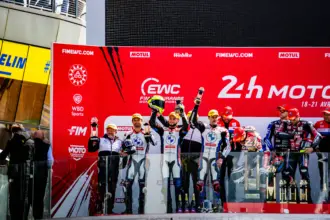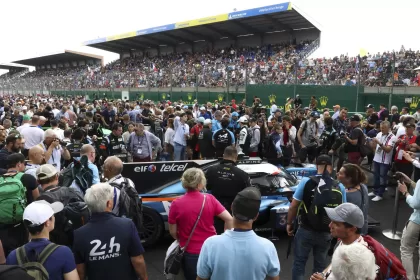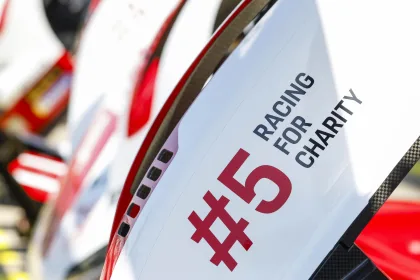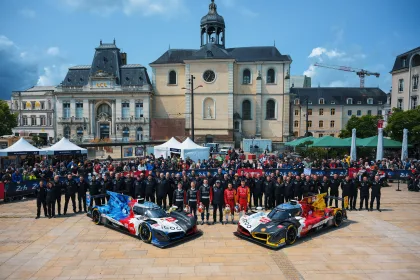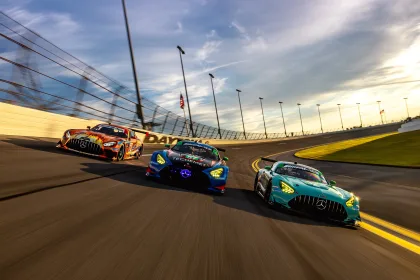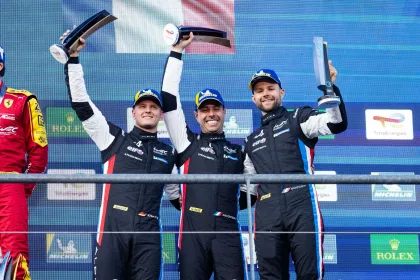- Three 24-hour races on three consecutive weekends
- Three questions about the endurance classics to Stefan Wendl, Maxime Martin and Luca Stolz
- Stefan Wendl: “Even though there are now more frequent triple headers in Formula 1 – this is a completely different dimension.”
With the 24 Hours of Le Mans (14/15 June), the ADAC RAVENOL 24h Nürburgring (21/22 June) and the CrowdStrike 24 Hours of Spa (28/29 June), Mercedes-AMG has three endurance classics on the agenda on three consecutive weekends – an extreme test of endurance for man and machine.
Mercedes-AMG Performance Drivers Maxime Martin (BEL) and Luca Stolz (GER) will compete in all three races. With Lucas Auer (AUT), Mikaël Grenier (CAN), Maro Engel (GER) and Fabian Schiller (GER), four more drivers will face the double challenge of the Nürburgring and Spa-Francorchamps. Mercedes-AMG Team GetSpeed will also complete two of the three endurance classics in succession.
We take a look at this unique challenge from different perspectives: three questions each for Stefan Wendl, Head of Mercedes-AMG Customer Racing, and the two drivers Maxime Martin and Luca Stolz.
Stefan Wendl, Head of Mercedes-AMG Customer Racing
Three endurance races on three consecutive weekends. Has that ever happened in the past?
Stefan Wendl: “No, it’s never happened before. It’s the first time we’ve had this kind of challenge and it’s also unique. It’s a very intensive phase and a real test of endurance for everyone involved. For a long time, we thought that the triple-header would not affect us, as we had not originally planned to start at Le Mans. When it became clear at the end of last year that we would be involved in all three endurance races after all, we took appropriate measures and coordinated them at an early stage. The tightly synchronised racing calendar pushes the resource balance to its limits.”
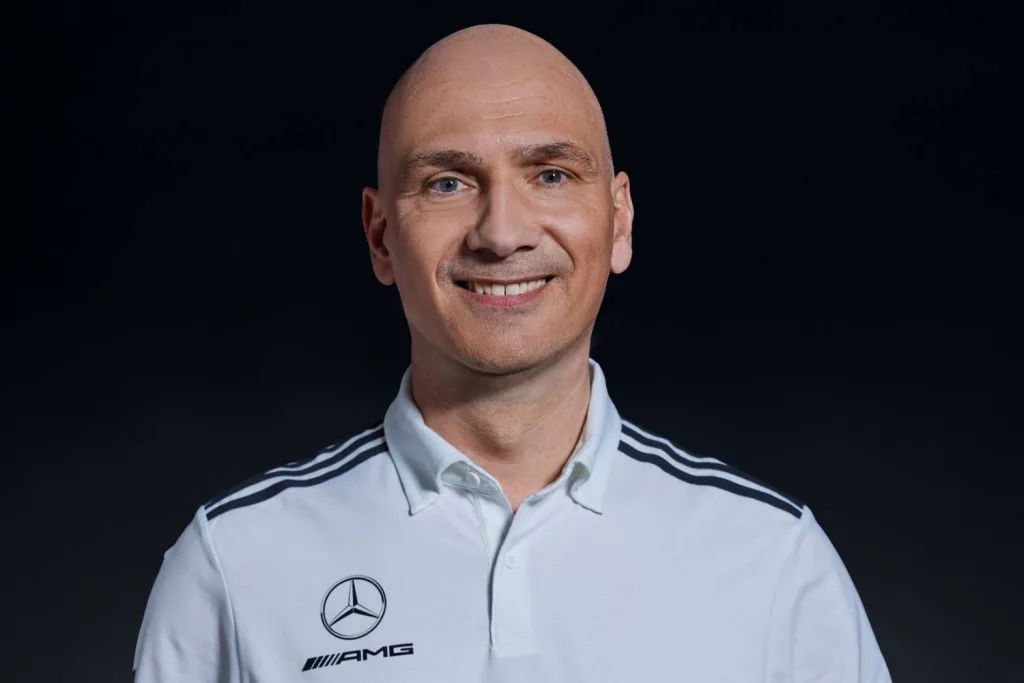
How are you approaching this challenge from a manufacturer’s perspective?
Stefan Wendl: “Maxime Martin and Luca Stolz are the only people from our motorsport family, who are actually contesting all three 24-hour races. Apart from that, we have made sure that the schedule for each participant includes a maximum of two of the three races in order to allow for targeted breaks. At the ADAC RAVENOL 24h Nürburgring, we make use of the regulations and have four drivers in each of the performance cars. This allows us to divide up the stint times better and enable longer recovery phases. This is not possible in the other two races at Le Mans and Spa-Francorchamps, where the regulations only allow three drivers per car. We have also taken a forward-looking approach to car planning: For each individual race – including the DTM, which follows directly after Spa – our performance teams use different cars in order to avoid bottlenecks or delays in the programme.”
In the course of resource planning, you have certainly spoken to many involved people individually – what are the different challenges?
Stefan Wendl: “The challenges are indeed different, but the effort is the same for each individual. For the drivers, it’s important not to get stressed and to be fit and ready for action at all times. It is crucial to make conscious use of the breaks between sessions on the days before the race and to regenerate in a targeted manner during the 24 hours. The same applies to the mechanics: every job on the car, every pit stop must be perfect. Such details are often crucial for a good result – and that is our aim in every race, despite all the stress. On the team side, the Mercedes-AMG Team GetSpeed is certainly facing the greatest stress. Two 24-hour races back-to-back is a particular logistical challenge in itself. Dismantling takes place at the Nürburgring on Sunday evening and set-up begins at Spa on Monday morning. From an engineering perspective, each race must also be approached individually. Every event has different sporting regulations. Every impact has different implications, every penalty has different consequences. Even if there are now more frequent triple headers in Formula 1 – we are talking about Customer Racing and endurance races here, that’s a completely different dimension.”
Maxime Martin, Mercedes-AMG Performance Driver
Le Mans: #61, Iron Lynx, together with Martin Berry and Lin Hodenis
Nürburgring: #14, Mercedes-AMG Team GetSpeed, with Maro Engel, Luca Stolz and Fabian Schiller
Spa-Francorchamps: #9, Boutsen VDS, with Maximilian Götz and Mikaël Grenier
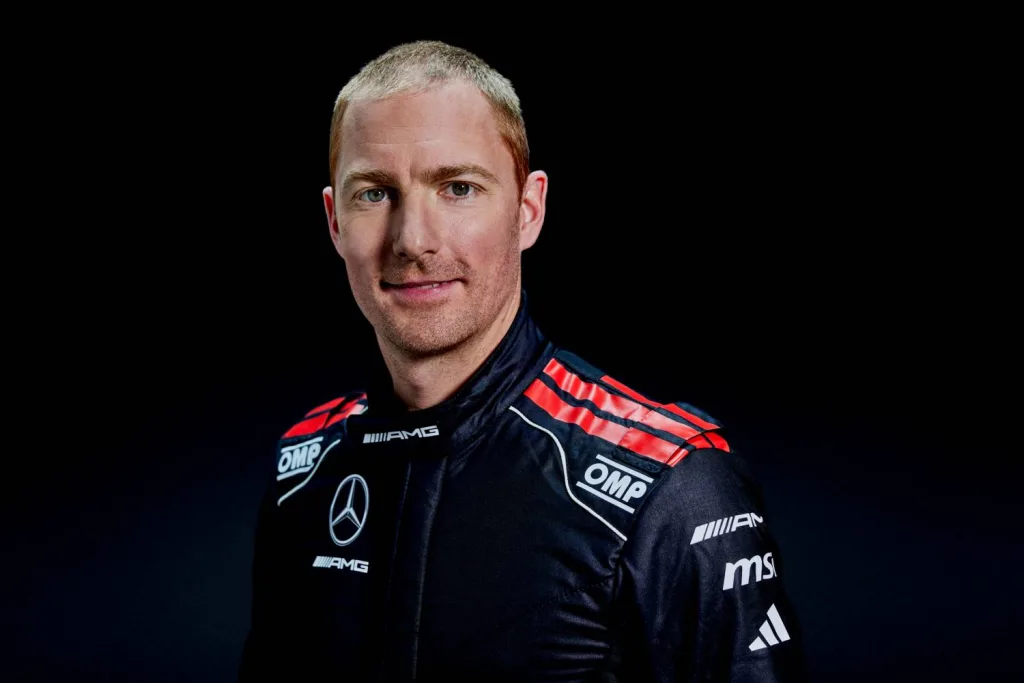
You drive all three 24-hour races. How do the races differ from each other?
Maxime Martin: “Each race has its own rules, regulations and challenges. All three races last 24 hours, but that’s the only thing they have in common. Le Mans has grown historically and is the most famous of the three endurance races worldwide – it is probably the easiest mentally. The Nürburgring is the most mentally challenging because of the traffic, the weather conditions and the characteristics of the track. Spa-Francorchamps, on the other hand, is the most physically demanding because of the intensity, the number of cars and the high calibre of the drivers and teams. This weeks will definitely be very demanding and extremely gruelling, both physically and mentally.”
How do you approach each individual race and what does it take to be successful in all three in the end?
Maxime Martin: “I try to go into the intensive phase as rested as possible, even if that’s not easy. In the period from the beginning of May to the end of July, I have ten race events over thirteen weekends. This is still my first year with Mercedes-AMG. And even though I’ve been racing GT cars since 2007, a year like this with a new manufacturer is always a bit more intense. Something unforeseen can happen at any time in a 24-hour race. The most important thing is to drive the race cleanly – no penalties, no collisions. But you always need a bit of luck to come out on top at the end. I hope that I can do that in at least one of the races. Mercedes-AMG has definitely created the basis – we have a strong package, especially at the Nürburgring and in.”
Do you have certain rituals or is there something you consciously avoid?
Maxime Martin: “No, I don’t have any set rituals or special approaches. The biggest challenge is to be fully focussed and one hundred percent ready for every single race. I try to sleep for an hour at least twice during the 24 hours. I want to maintain this rhythm, even if all three races take place on three consecutive weekends. This intensive phase also means I can spend less time with my family – which is always difficult, but it’s part of the job.
Luca Stolz, Mercedes-AMG Performance Driver
Le Mans: #63, Iron Lynx, together with Brenton and Stephen Grove
Nürburgring: #14, Mercedes-AMG Team GetSpeed, with Maro Engel, Maxime Martin and Fabian Schiller
Spa-Francorchamps: #17, Mercedes-AMG Team GetSpeed, with Jules Gounon and Fabian Schiller
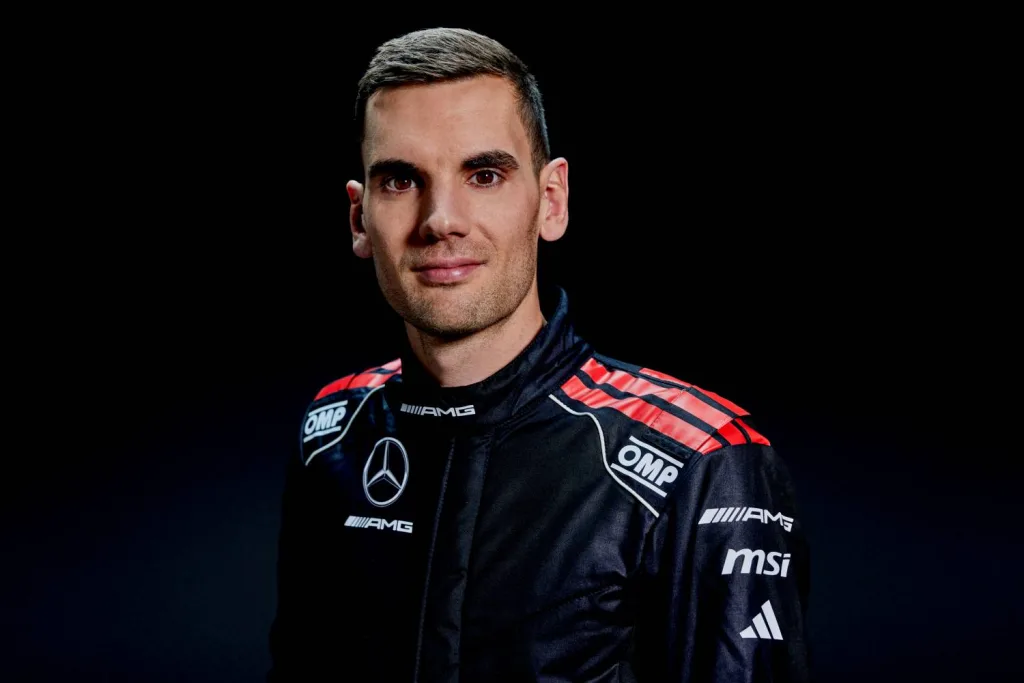
Three 24-hour races on three consecutive weekends – how are you preparing for this extraordinary challenge?
Luca Stolz: “Competing in three 24-hour races on three consecutive weekends is a new challenge for me. However, it doesn’t change my basic approach compared to previous years – even if the race calendar allowed for a little more time between the events. The phase between arriving at the venue and the start of the race is long, especially at Le Mans, where I travelled last Thursday. During this time, you have to stay focussed and, above all, make sure you get enough restful sleep the night before each race. It sounds banal, but choosing the right hotel is therefore a factor that should not be underestimated for us drivers. During the races themselves, there are almost no deep sleep phases. The body is always in stand-by mode, the adrenalin level is constantly high. But a short power nap can work wonders. My physical preparation starts early in the year, especially with endurance training – I cycle a lot, for example. Between races, I then try to use every free minute to regenerate. There is no time for friends during this time. And if things go very well at one of the first events, the party after the race will probably be rather short. For me, the only rule is: anything that helps you recover is allowed. As I said, the format and the schedule are new to me, but I’m really looking forward to the challenge.”
Speaking of challenges: What special challenges do three such different races bring with them?
Luca Stolz: “The three races really are very different – in terms of speed, driving style and also the regulations. In Le Mans, we are the slowest car class in the field with the LMGT3. So I have to constantly look in the mirror because you are constantly being overtaken by faster prototypes. The 24 Nürburgring is the complete opposite: there I start in the SP9 PRO class, the fastest category, and fight for overall victory. Here you are the one who has to constantly overtake in a very mixed field with many slower cars. In Spa-Francorchamps, on the other hand, there are over 70 GT3 cars in one class on a Formula 1 circuit. Physically, this is the most demanding race. In addition, it is essential to know the respective regulations in detail. At Le Mans there are both slow zones and safety car phases, whereas at the Nürburgring there are so-called Code 60 zones, what means pure slow zones. At Spa-Francorchamps, full-course yellow phases and classic safety cars are used. If you don’t know exactly what applies when, you quickly risk penalties or tactical disadvantages.”
What is the most important thing for you personally at a 24-hour race – do you have any rituals?
Luca Stolz: “To be honest, I don’t have any special rituals. My favourite time to be at the wheel is when the sun rises on a Sunday morning. Unfortunately, I didn’t have that at the Nürburgring or Spa last year – maybe this time. It’s also something special when I get to drive the start or the finish. It’s really important for me to get into my flow. This also includes a relaxed atmosphere and good team spirit with my fellow drivers. And a sprinkle of humor is essential. But one thing is clear: everyone in the team knows what it’s all about – being at the top on Sunday afternoon!”

